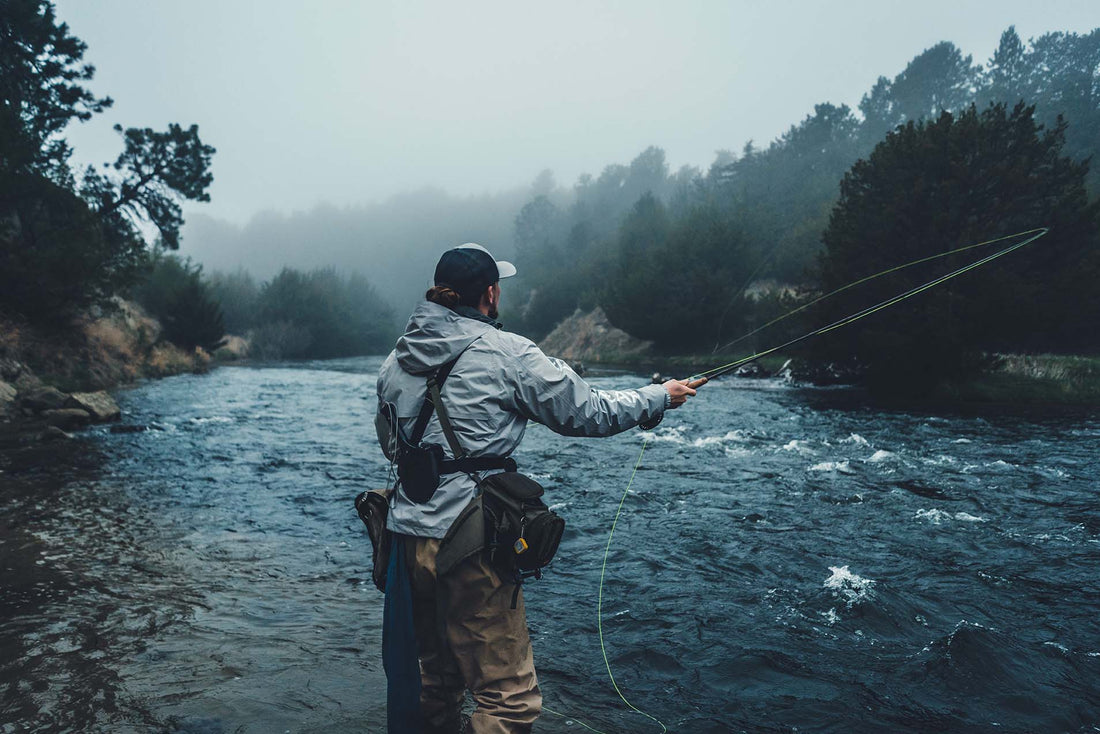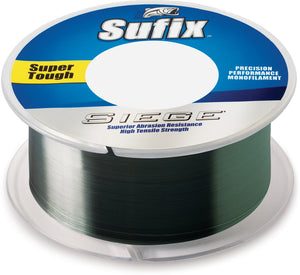As a general rule, you should change your fishing line at least once a year. This doesn’t mean your fishing line goes bad after a year. There are multiple factors that affect how often you should be changing your fishing line, including frequency of use, type of fishing line, storage, and line thickness. In this article we’ll do a deep dive into the types of line and when you should change them out to keep fish on your line and avoid disappointment.
Types of Fishing Line
There are three main materials that fishing lines are made of: monofilament, fluorocarbon, and braided line.
Monofilament Line
Monofilament fishing line comprises a single, continuous filament of nylon. Different manufacturers use varieties of nylon to improve the fishing line’s strength, abrasion resistance, and stretch. Monofilament fishing line will stretch before it reaches the breaking point. It is preferred by anglers as it can withstand sudden big jerks and can last for a whole season. However, it can behave in uncertain ways when wet, and it can weaken with exposure to UV light.
Fluorocarbon Line
Like a monofilament line, fluorocarbon is one continuous strand except that it is made of polyvinylidene fluoride. This material is virtually invisible in water, and hence, is popular with anglers. It also can withstand the damaging effect of UV light and is more abrasion-resistant than a monofilament line.
However, it has more memory, which means it will retain the curls and bends of the line, which is not a good thing. Although the line is heavier and stronger, it is more rigid, which means it can snap from sudden shocks. You can still get a few seasons from a fluorocarbon line, depending on your usage.
Braided Line
Braided line is made of strands of synthetic fiber woven together, which gives it more strength and weight than the aforementioned lines. For a braided line, it is surprisingly skinny as well. Best of all, it has almost non-existent memory. However, braided lines don’t have any stretch, and have poor abrasion-resistance, and can fray if they rub against something.
Additionally, they are colored and some anglers also say they don’t hold all knots well. Still, they can last you for several seasons.
Does Fishing Line Go Bad?
Although fishing lines do not exactly have an expiration date, they cannot last forever. Much like most synthetic material, fishing lines can go bad from neglect, improper storage, and continued use.
They can fray, lost their elasticity, become rigid, and become more susceptible to snapping.
How to Know If Your Fishing Line is Bad
There are several signs that can indicate that your fishing line has gone bad. By regularly checking your fishing line for these issues, you can prevent them from snapping at the most inopportune moment.
Fraying
Your fishing lines can get frayed while you are fighting a fish or getting caught in something. If you see a frayed section near the leader area, it is best to cut about 10 feet of the line, just to be sure you get rid of all the abraded area.
Discoloration
Although discoloration is hard to see in clear monofilament lines, it is easy to spot in colored fishing lines. Discoloration occurs due to the bleaching effect of the sun’s ultraviolet rays. This is also a sure sign of a weakening line. If your fishing line is discolored, you should replace it.
Mildew
Fishing lines, particularly monofilament lines, may get spots of mildew from the moisture. Although the effects of mildew on fishing line is debatable, it is best to replace the line to prevent any nasty surprises.
Why Does the Fishing Line Go Bad?
Take a look at why the various type of fishing lines go bad:
Monofilament Line
Monofilament fishing lines have wonderful properties which make it one of the favorite fishing lines among anglers. However, it has the shortest shelf life out of the three types since it is highly vulnerable to heat and UV rays, which can degrade the nylon.
Additionally, because it is very stretchable, it can wear out and weaken over time. Since it has a little memory, the line can bunch up and become tangled in things.
How Often Should You Change Monofilament Lines?
Monofilament lines should be changed at least once a year, though many anglers recommend changing them after every fishing trip. Their durability depends on how much you use them:
- If you are a heavy fisher, you should change monofilament line 3 to 4 times a year.
- Moderate fishers can change it 2 to 3 times a year.
- Weekend fisher may just need to change it once a year.
If your fishing line remains unused for 2 to 3 years, you should throw it out.
Fluorocarbon Line
Fluorocarbon lines are much denser than monofilament lines. Because they are clear, they reflect sunlight and remain safe from UV damage. However, they can fray, stretch out, and break from sudden jerks to the line. However, if correctly maintained, fluorocarbon lines can last four times longer than monofilament lines.
How Often Should You Change Fluorocarbon Lines?
Fluorocarbon lines may be changed at least once a year, though they can last much longer:
- Heavy fishers should change it up to 3 times a year
- Moderate fishers can change it 1 to 2 times a year
- Weekenders can change it once a year
They have a shelf life of approximately 7 to 10 years, so if you haven’t used them at all during this time, it is best to discard them.
Braided Line
Braided lines are the most resistant to wear and tear but they can still wear out. Braided lines can get frayed, though they are very strong. Since they come in colored options, they can also discolor. If they look even slightly worse for wear, they are past their prime. Having said that, properly cared for braided lines are said to last for several seasons.
How Often Should You Change Braided Lines?
Some anglers say braided lines can last a lifetime. Though that’s not a certain thing, they can last for several years:
- Heavy fishers can change it 1 or even 2 times a year.
- Moderate fishers can change it once a year.
- Weekenders can change them once a year.
- You should throw them after 10 years of disuse.
How To Prolong The Life Of Your Fishing Line
There are some things that can shorten the life of your fishing line and you can prevent them to make the most out of your line. However, we do not recommend using them beyond their shelf life.
Usage Frequency: The more you use your line, the faster it will deteriorate. However, that’s not necessarily a bad thing, because you are using it to the maximum.
Line Type: Lines that are denser or resist abrasion last longer than lines. Additionally, flexible and stretchy lines last longer than rigid fishing lines as they can absorb impact.
Storage: A fishing line that is stored wet will let in moisture and degrade faster. Additionally, heat and UV rays can also break down the fishing line. Hence, no matter what line you buy, make you keep it in a cool and dry place. Additionally, you can keep your braided line on a spool; however, this doesn’t work on monofilament and fluorocarbon lines because of memory.
Setting up the Pole: Inexperienced anglers may miss the guide and thread the line through the gap between the guide and the fishing rod. This can lead to the line rubbing against the edges and can lead to abrasions.
The Bottom Line...
The answer to how often you should change the fishing line depends on various factors.
To be on the safe side, you should change your line at least once a season, though we know that fluorocarbon and braided lines can last much longer than that. Having said that, you should use common sense to determine whether your fishing line needs to be changed.
If your fishing line looks worn out and discolored, it probably needs to be changed, regardless of how long you have used it — though if you take proper care of your line, they won’t exhibit signs of damage.
If you still can’t decide, you can do a line test. Simply tie your fishing line to a fixed and solid object that can handle the stress you will be putting on a fishing line. Let about 25 feet of fishing line and pull. If the line breaks before it reaches the force capacity it can handle, it means it has gone bad and you can toss it out.
If you have any questions, feel free to ask anyone at Angling Sports next time you are in.
Tight Lines!






